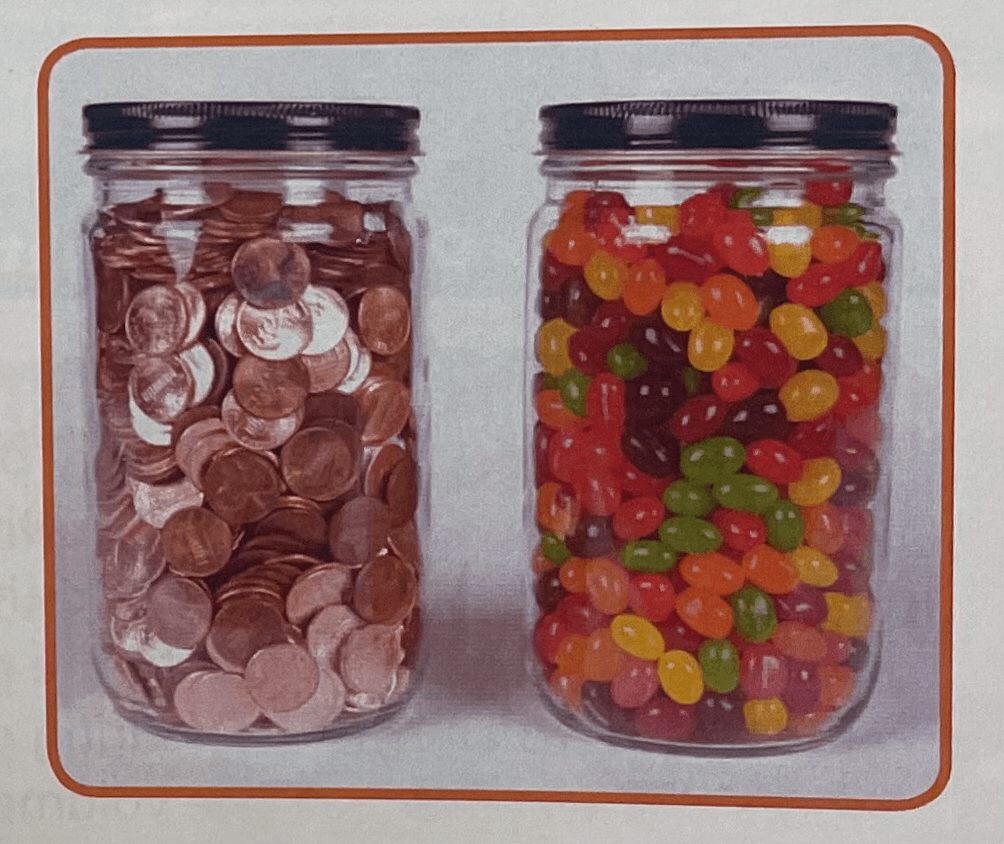Anything that takes up space
Matter
The amount of matter in something
Mass
A state of matter with no definite shape or volume
Gas
A mixture in which all the parts mix evenly
Solution
Are making a mixture, making a solution and separating a mixture examples of a physical change or a chemical change?
physical change
Sarah notices that a metal fence rail feels cold and hard. What is Sarah observing?
A. chemical change
B. densities
C. physical properties
D. states of matter
C. physical properties
The amount of space matter takes up
Volume
The state of matter in which volume stays the same but the matter takes the shape of its container
Liquid
The process during which water moves into the air
Evaporation
Is breaking glass a physical change? Why or why not?
Breaking glass is a physical change, because the matter doesn’t change. It just breaks into smaller pieces.
A boat loaded with too much cargo sank. Why?
A. It became less dense than water.
B. It’s volume became too great.
C. It’s density increased.
D. All heavy things sink.
C. It’s density increased.
The mass of something compared with its volume
A state of matter with a shape and a volume that don’t change
Solid
A substance with two or more different kinds of matter
Mixture
Why is changing the wool from the sheep into a hat a physical change?
Changing the wool from the sheep into a hat is a physical change because the matter itself doesn’t change.
 Which of the following is true of these two jars and their contents?
Which of the following is true of these two jars and their contents?
A. They have the same mass.
B. They have the same volume.
C. They have the same density.
D. They have the same matter.
B. They have the same volume.
Which states of matter have a volume that doesn’t change?
A. solid and liquid
B. liquid and gas
C. solid and gas
D. solid, liquid and gas
A. solid and liquid
Which of these is a solution?
A. peanut butter and jelly
B. salt and water
C. cereal and milk
D. celery and carrot sticks
B. salt and water
Which of the following is a chemical change?
A. dissolving soap in water
B. filling a balloon with air
C. grating cheese
D. burning wood
D. burning wood
A ball of modeling clay sinks in a pan of water. What change could make the clay float?
A. Remove some of the water.
B. Increase the clay’s density.
C. Change its shape.
D. Add more water to the pan.
C. Change its shape.
Even though sand takes the shape of the container like a liquid, each individual grain has its own shape and volume.
You have a mixture of two kinds of buttons. Some are large. Some are small.
Is the button mixture a solution? Tell why or why not.
No, the button mixture is not a solution because the buttons do not mix evenly and they can be separated.
Is a change of states, such as ice melting, a physical change? Explain your answer.
A change of states is a physical change. Even though the ice doesn’t look like the water, it is the same kind of matter.
Ruth drops a marble and a tennis ball into a container filled with water. The marble sinks, but the tennis ball floats. Shouldn’t the tennis ball sink because it is larger, and the marble float because it is smaller? Explain your reasoning.
Objects do not float or sink because of their size. They float or sink becuase of their density. A marble has greater density than water; therefore, it sinks. A tennis ball has less density than water; therefore, it floats.
There are two identical boxes. One box is filled to the top with books. The other box is filled to the top with foam pillows. Which box would you predict has greater mass? Explain your answer.
The box of books has more mass, because books are denser than pillows.
When you leave a glass of ice water standing on the counter, water forms on the outside of the glass. Where does this water come from?
The water is condensation from the air. The cold glass cools the water vapor in the air around the glass, causing it to condense on the glass.
How do you know that the rotting wood is not a physical change?
The rotten wood is not the same kind of matter as the original wood and it can’t be made to look like the original wood.